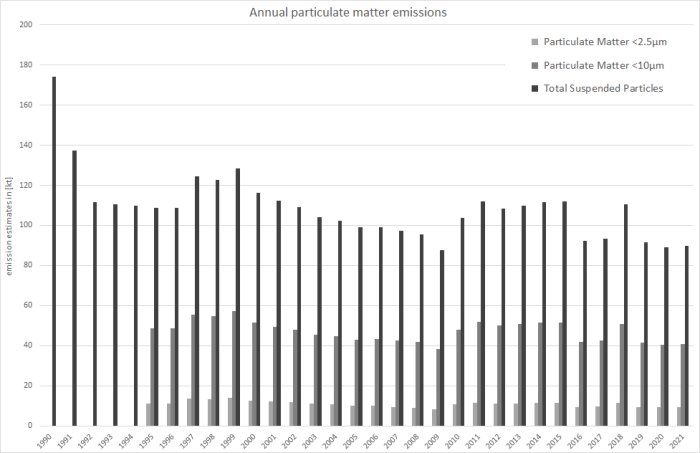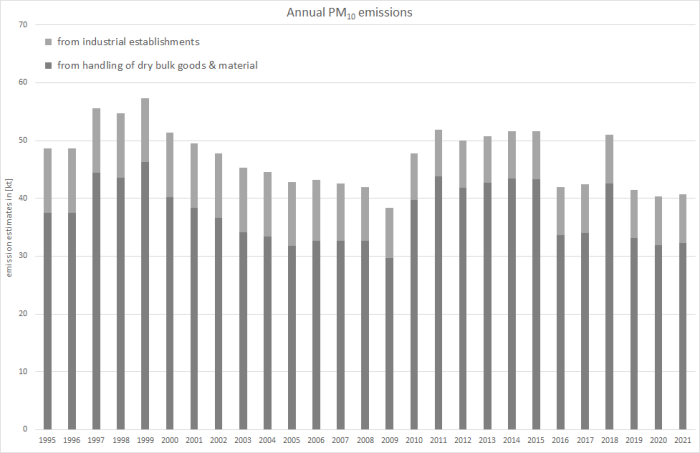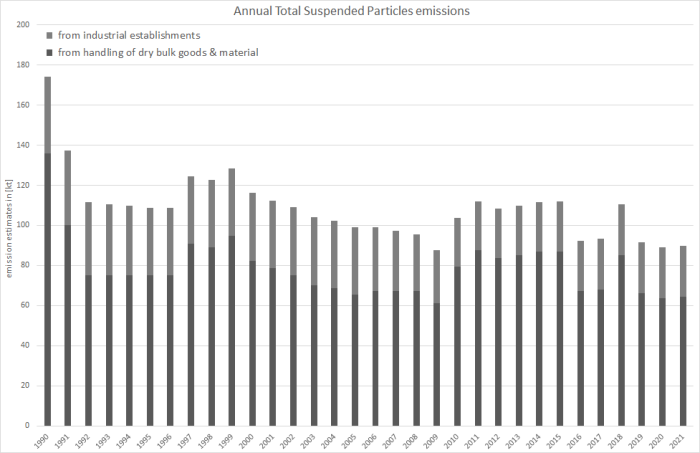meta data for this page
2.L - Other Production, Consumption, Storage, Transportation or Handling of Bulk Products
Short description
Within the NFR tables, category 2.L is displayed to include emissions from “other production, consumption, storage, transportation or handling of bulk products”. Here, Germany reports particulate matter (PM) emissions from both the handling (loading and unloading) of bulk goods as well as diffuse PM emissions from industrial establishments.
Therefore, in the understanding of the inventory compiler, respective emissions from storage, handling and transport of mineral, chemical and metal products (NFRs 2.A.5.b, 2.B.10.b und 2.C.7.d) are included here.
Even though these emissions are reported as a sum under NFR 2.L, this report provides seperate specific information regarding emission from the handling of bulk products (2.L(a)) and from industrial establishments (2.L(b)). For these detailed information, please refer to the sub-chapters linked above.
| Category Code | Method | AD | EF | ||||||||||||
|---|---|---|---|---|---|---|---|---|---|---|---|---|---|---|---|
| 2.L(a) Handling of bulk products | T1 | NS | CS | ||||||||||||
| 2.L(b) Diffuse emissions from industrial establishments | T1 | NS | CS | ||||||||||||
| NOx | NMVOC | SO2 | NH3 | PM2.5 | PM10 | TSP | BC | CO | PB | Cd | Hg | Diox | PAH | HCB | |
| Key Category: | - | - | - | - | L/- | L/T | L/T | - | - | - | - | - | - | - | - |
Methodology
For specific information on applied methods, activity data and emission factors please refer to the sub-chapters linked above.
Discussion of emission trends
Table: Outcome of Key Category Analysis
| for: | TSP | PM10 | PM2.5 |
|---|---|---|---|
| by: | L/T | L/- | L/- |
In general, diffuse particulate matter emissions depend strongly on the amounts of dry bulk goods handled and transported. In addition, due to efforts to prevent such particle emissions, the time series of the emission factors applied for all three fractions of particulate matter show a falling trend.
Recalculations
With activity data and emission factors remaining unrevised, no recalculations were carried out compared to Submission 2022.
Planned improvements
For improvements planned for NFR sub-categories 2.L(a) and 2.L(b) please refer to the corresponding sub-chapters linked above.





